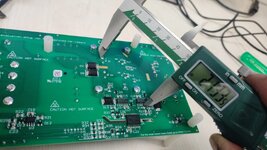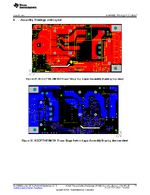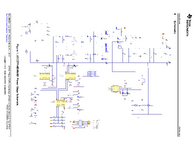sabu31
Advanced Member level 1
Dear All,
I am studying PCB of the PSFB evaluation board from TI.
One thing I want to know is the limit for gate trace length. Generally, we know that the gate trace should be short. But in this board its roughly 2 inches.
Also, the return path for the gate should connect to the ground plane a single point right instead of using a common ground plane. Is there any thing missing in my understanding.
The top switches are on the same heatsink and the bottom switches are on the same heat sink. Is there any particular benefit in this arrangement.
I am studying PCB of the PSFB evaluation board from TI.
One thing I want to know is the limit for gate trace length. Generally, we know that the gate trace should be short. But in this board its roughly 2 inches.
Also, the return path for the gate should connect to the ground plane a single point right instead of using a common ground plane. Is there any thing missing in my understanding.
The top switches are on the same heatsink and the bottom switches are on the same heat sink. Is there any particular benefit in this arrangement.


